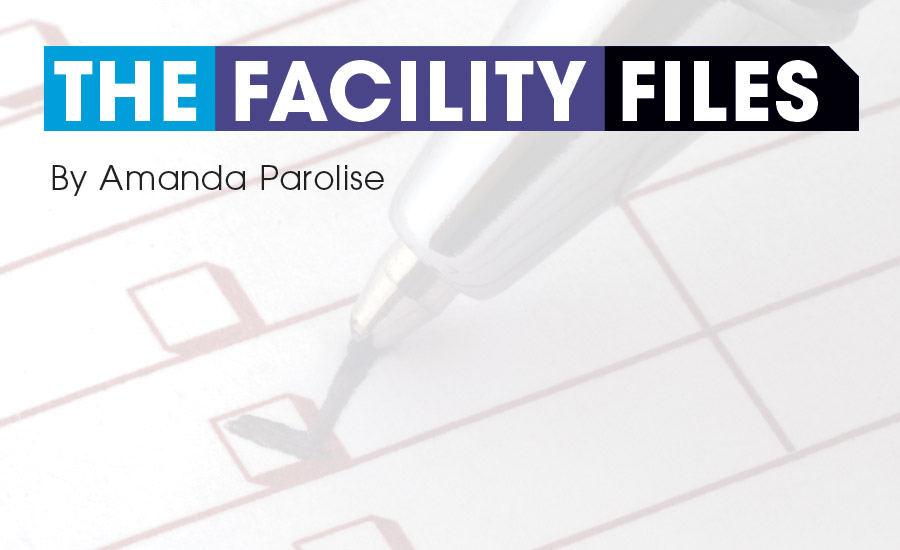This month’s Facility File will focus on a new central, high-efficient, hot water boiler plant to replace an antiquated remote high-pressure steam boiler plant serving a campus setting. The entire HVAC system will be removed following the installation and commissioning of a new central heating boiler plant located on an existing 45-building campus setting. This month’s discussion will be to address the B2B design intent of providing employee safety and accessibility to the equipment, shut-off valves, etc. necessary to effectively operate and maintain this new structure based on the owner’s building program.
At the recommendation of the design team leader, the HVAC consulting engineer, the campus executive board/owner has chosen the project delivery method to be IPD (integrated project delivery). The method of project deliver is based on ASHRAE 2015 — HVAC Applications Handbook chapter 58 (Integrated Building Design). Other safety and accessibility checklists will be located and downloaded from the internet and will be referenced by the IPD team as part of the basis of design directed toward plant and employee safety. This information, combined with the owner’s own knowledge of operating a central heating plant and a 45-building campus with underground hot water system distribution, will assist the IPD team in understanding intricacies owning, operating, and managing this building.
An IPD team meeting was coordinated so that the owner, facility manager, owner’s representative, design team, IPD project manager, infection control (IC) third-party consultant, general contractor, and subcontractors, along with a third-party commissioning and air and water balancing (CxTAB) consultant, can review the importance of personnel safety.
With all these design guidelines from ASHRAE, the IPD team discussed specific building standards that need to be applied to this project as well as project scheduling/timeline. For the facility operation, with in-house staff and not an outsourced group, the staff will want to assure there is adequate contract specification requirements included pertaining to O&M, training, preventive maintenance work order system, and energy operating budget.
In the Phase 3 Concept Development of the IPD project, the facility manager and a few of her O&M technicians will want to contribute information to the design team member’s writing of the contract specification and more specifically the following activities: service contracts, parts inventory, and as-built drawings requirements.
For this August B2B, the IPD team working together, owner-designer-builder, based on a building program construction budget, the IPD estimator, along with the prime subcontractors, will be involved in the design phase and be able to contribute to the contract documents. In the construction phase, the O&M technicians will want to revisit the issues noted above that were in the design phase. Integral to this early phase of the construction, the facility staff will use the design team’s 3-D building information modeling (BIM) and the piping and sheet metal fabrication drawings to assure that adequate access and headroom will be available for the facility staff to safely perform their jobs.
Next comes the start-up and commissioning phases, and the O&M staff will want to be proactive in following along with the IPD team’s mechanical-electrical in-house coordinator and the subcontractor’s start-up personnel and receive equipment and system training using the O&M manuals and contract drawings (that will eventually become the as-built drawings).
Once the start-up has been completed, the ATC subcontractor, owner representative, and CxTAB consultant will complete the air and water balancing of the new central air and exhaust air systems. The IC consultant will commission and instruct O&M staff on IC policy and procedure. The HVAC subcontractor shall go through an automatic control system initial dry-run demonstration prior to the general contractor and his subcontractors demonstrating the system to the CxTAB consultant. The ATC subcontractor will also begin collecting system performance by trending pertinent HVAC system and equipment data including the following:
[X] Outdoor air dry bulb and wet bulb temperature [X] building space pressure [X] pressure differential across pumps and boilers units [X] alarms [X] safeties [X] offsite internet computer control interface.
Taking the same approach as the design engineer, the facility manager’s personnel will use a series of computer generated touchscreen project checklists that allows her staff to confirm that the following facility files have been collected. This process should start at the beginning of construction and not at project closeout so that the facility files can be inputted into a CMMS system. Touchscreen O&M checklists should include:
[X] Equipment shop drawings [X] O&M manuals, parts list, and lubricants [X] troubleshooting tips [X] remote monitoring instructions
The O&M staff should review the contractor-produced 3-D BIM safety and accessibility field coordination drawings prior to fabrication. Touchscreen service checklists should include:
[X] Corridor and passage lanes with headroom heights [X] access for coil and filter removal [X] emergency egress [X] access for servicing equipment.
The training process should include specific HVAC system ventilation and IC training along with emergency plan training due to unexpected alarm e.g., outdoor air quality alarm. The air and water balancing report will be completed and as-built conditions updated after the final TAB report. This will requires the TAB subcontractor to provide the air and water balancing reports along with the associated system flow diagrams noting quantities and pressures for rebalancing if necessary as part of the project closeout documents. Touchscreen training checklists should include:
[X] Equipment [X] system [X] emergency plan [X] automatic controls [X] energy management





